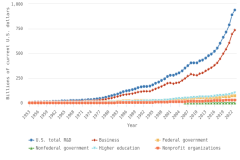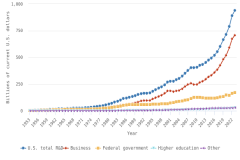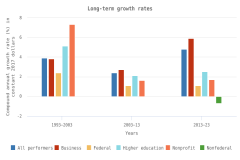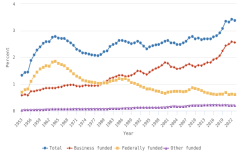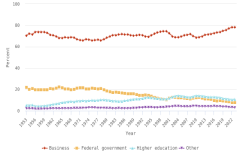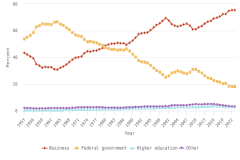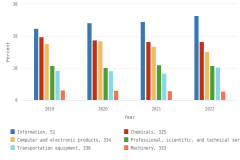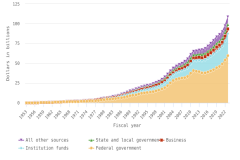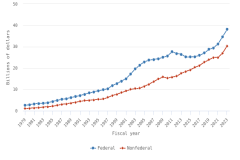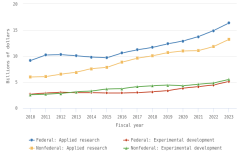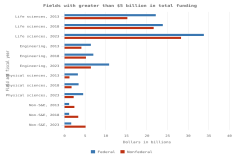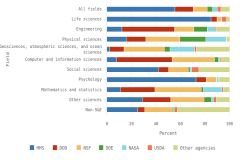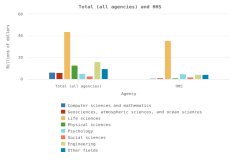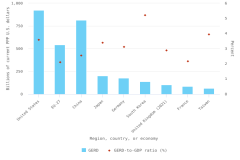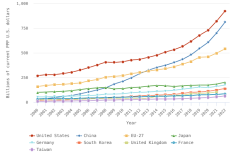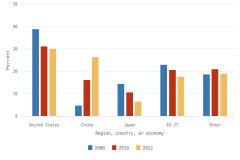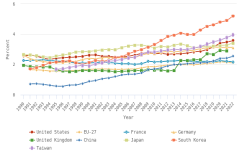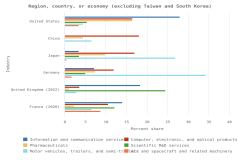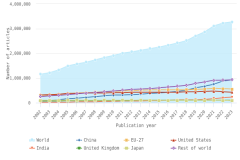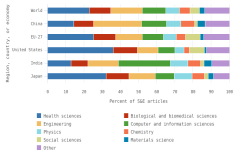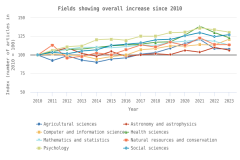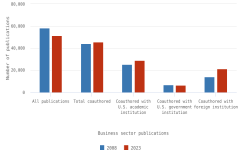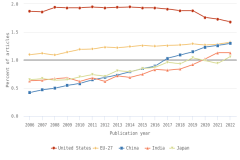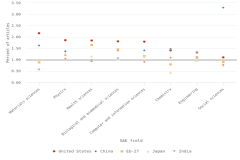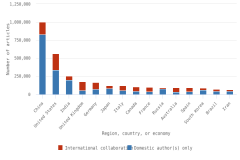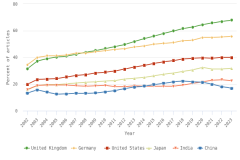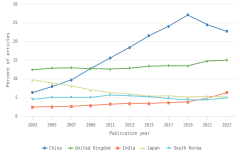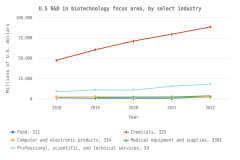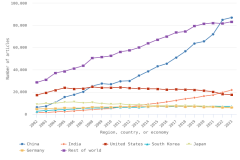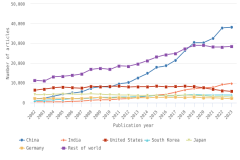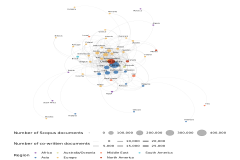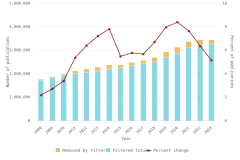Conclusion
The top 8 R&D-performing economies accounted for 82% of global R&D expenditures in 2022, with the United States (30%) and China (27%) together accounting for over half, based on comparable OECD statistics. As a region, the EU-27 performed 18%. The U.S. global R&D share declined from 39% in 2000 to 31% in 2010, remaining stable at 30% by 2022. China’s share has increased steadily since 2000, with contemporaneous declines in the shares of Japan and the EU-27. The business sector accounted for more than 75% of R&D expenditures for 5 of the top 8 R&D-performing economies (including for the United States and China).
In the United States, the business sector dominates R&D funding and performance, and the majority of both are devoted to experimental development. The federal government is the second-largest source of R&D funding. The federal government funds the majority of academic R&D performance, over 60% of which is devoted to basic research. At the same time, R&D performance by institutions of higher education, the second-largest sector overall—but the largest basic research performer—grew less than 3% (CAGR in constant dollars) since 2013, compared with 6% growth (CAGR in constant dollars) for the business sector over the same period.
Top R&D-performing economies dominate S&E scientific publication output. The United States remains highly influential based on its publication output (ranking second globally) and its relative impact, as measured by citations to its S&E publications (ranking first globally), although there has been a decrease in impact since 2014. China’s publication output has grown rapidly since 2003 and is now nearly double that of the United States. In terms of impact among S&E publications, China has increased rapidly in the last decade, overtaking the EU-27 to rank second behind the United States.
Health science publications comprised the largest share of global S&E publication output in 2023, but publication patterns by field were varied across individual countries and economies. Among top publication producers, the United States, the EU-27, and Japan published 36%, 25%, and 32% of their respective output in the health sciences. The U.S. share of health sciences publications is consistent with both federal and academic R&D obligation patterns discussed in this report. China’s top publications field was engineering (26%), while India’s was computer and information sciences (28%). International research collaboration has increased over the last two decades, reflecting traditional ties among regions, countries, and economies; new relationships that reflect growing global S&E capacity; and an increasingly networked research ecosystem.
 An official website of the United States government
An official website of the United States government

